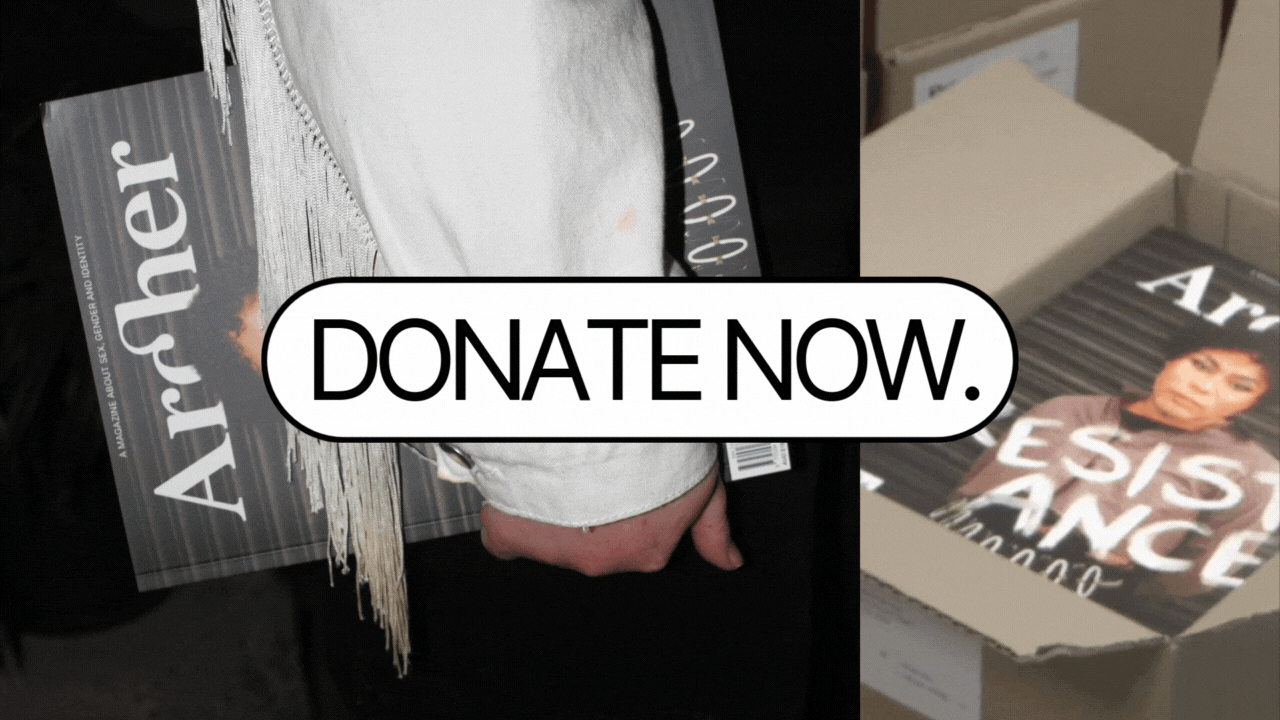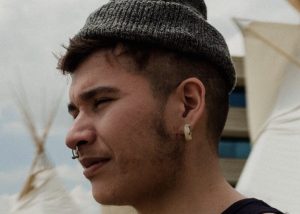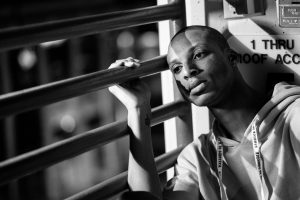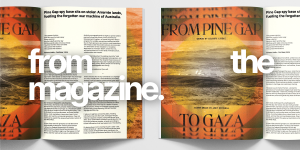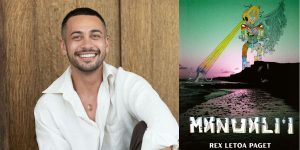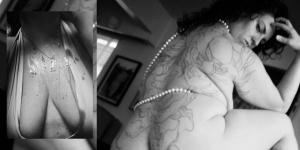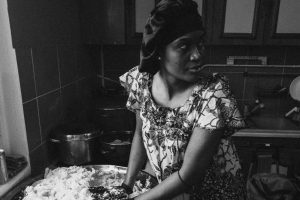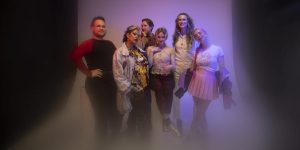Queer-affirming death spaces: The bones of my death work
By: Hini Hanara

It was July 2020 and we were back in lockdown. My brain was lined with claw marks; I was desperate to get out. I hated being in my head and body, my housemate breathed too loudly, and crying wasn’t working anymore.
Thank fuck I’m sober, I reminded myself constantly. I had just celebrated one year sober and I clung to that achievement like “my precious”.
That fact, and Caitlin Doughty’s YouTube channel Ask a Mortician, saved me during that time. I frothed at the macabre honesty she conveyed with such entertaining eloquence.
The death space was calling me, and funeral work felt like a good way in with my existing skillset. Through Caitlin’s work, I was introduced to the growing death literacy movement.
Considering my own experiences of death and religion, I saw a glowing opportunity to decolonise and smash the patriarchy.
All images: Hini Hanara, as featured in Archer Magazine #19, the PLEASURE issue.
My inner gay boi daydreamed of disco hearses and leather-clad trans men carrying coffins on their shoulders.
Cher, straddling a cannon, serenading mourners as glittery ashes shoot through a smoke and laser haze. Give me Dykes on Bikes flying lesbian pride flags at half-mast. Give me queer death doulas educating our people on end-of-life care. Give me permaculture queers advocating for natural burial. Give me permission to grieve. I want it all.
Online research of the big players in the funeral game in the western world gave me the willies. It presented as conservative, Christian, white and cis – everything I was not.
I had spent my entire youth masking my way through religion and I would have rather died than mask a minute longer.
Back home in Aotearoa, an iwi (tribe) from Tauranga is reclaiming the practice of natural burial where we can return to our Mother Papatūānuku (earth mother).
Deaths in custody are disproportionately high for Indigenous people; it’s no wonder the connection to their death rites have suffered because of this.
In Aotearoa, it’s also tradition to keep your person at home (or the marae) for three days after they die. Here, under the carvings of your ancestors, you sit with your person, and you wail, sing, sleep and hold ceremonies before burial or cremation. A show of emotion is very much a cultural norm.
This couldn’t be more expressly communicated than through the force of our haka, which was performed for my dad as he was carried out of the marae.
Ka mate! Ka mate! Ka ora! Ka ora! (I die! I die! I live! I live!)
[Editor’s Note: the haka was composed by Te Rauparah, High Chief of the Ngati Toa, in the early 1800s.]
As we rolled into the second year of lockdowns in 2021, the noise in my head was getting unbearably louder.
You get your feelings back in sobriety, and shit, I was feeling them. Feeling anger was not Christ-like so I repressed that emotion during my childhood and teenage years.
I had an overwhelming sense of violation from the doctrines that caused me shame and guilt around my queerness and gender questioning. I felt disabling grief for my younger self, but I didn’t have anywhere to put these big feelings.
I thought about my childhood, when I sat at church pews and my feet didn’t touch the ground. I often clicked my heels together to the tune of some song as I sucked my thumb and escaped in my head. I stopped sucking my thumb at 12 years old.
Hindsight is a wonderful teacher; today, I recognise these and many more telltale signs of emotional distress throughout my childhood.
Church offered its guides for life and of course my neurodivergent brain took everything literally.
These were ripe conditions for fearmongering and repression of self-sovereignty. I was glad to leave religion behind at 18 years old, but it cost me my community, friends and the stability of family ties.
This article appears in Archer Magazine #19, the PLEASURE issue – buy a copy here.
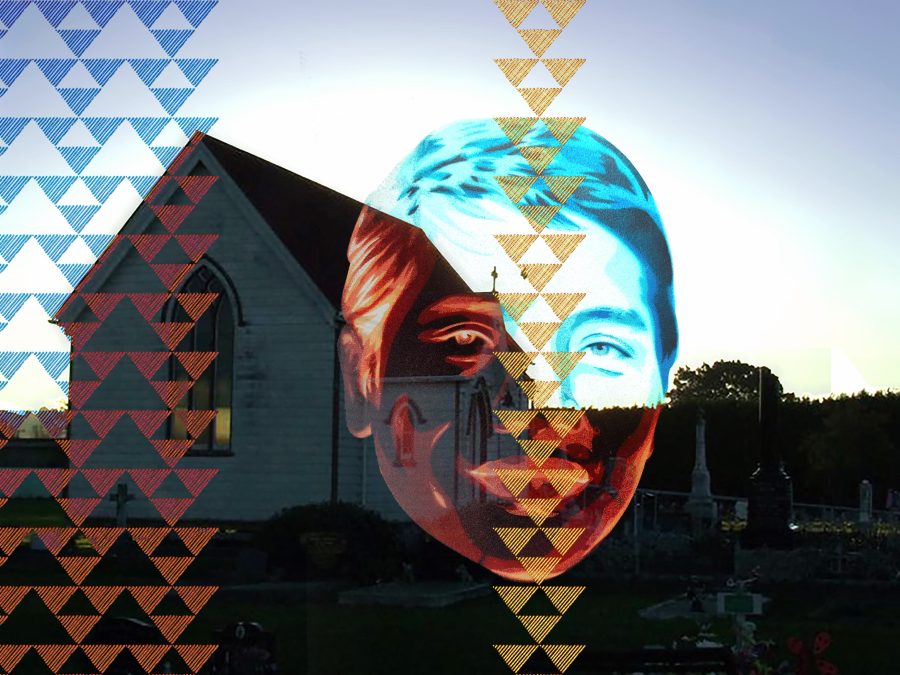
Papa told me pākehā stories | Photo-collage and hand stiched taaniko pattern
Background image: Omahu Urupa (cemetery) | Stencil artwork: Regan Tamanui
As an act of decolonising myself, I decided to legally change my name from ‘Cindy’ to a Māori transliteration – ‘Hini’.
A fellow trans friend suggested that perhaps holding a funeral service for my deadname could be a good way to navigate the disenfranchised grief I was experiencing.
The idea hit me like lightning. Like shooting a mortally wounded animal in the head to save it from further pain, this was an act of self-compassion.
The licence to write my own narrative was foreign. To die while I was still alive? My spicy brain did somersaults over this concept as I went about planning Cindy’s tangi (funeral). It felt like I had left her body and could finally look back at her with compassion, when all I had known was self-loathing and hatred.
I had found that sweet spot of surrender where her death meant me living.
As I returned to my hospo job post-lockdown, serving up high tea for hens and baby showers, I was knee deep in the planning process for Cindy’s tangi.
The job was painfully heteronormative, but I was generally quite happy in creating this fantasy space for women because they, of all people, deserved it.
I found my place of solace on the tram ride home from work. Behind my sunnies and face mask, I’d weep and let it all wash over me.
While others might go to their places of worship, or nature, here I was on my tram cathedral, masking my true self and true feelings. I had masked throughout my childhood; no wonder if felt comforting.
It took all my networking prowess to get my foot in the door at my first funeral home.
Wearing their suit to funerals was made bearable by the gender euphoria I felt when they allowed me to wear a male tie instead of a female one.
I was granted the opportunity to help in the mortuary, which I was quite excited about. I’d call myself curious, not morbid, but you can call me what you will. Growing up watching cattle being slaughtered for food was not unusual for me and it didn’t scare me.
Decay and composting hold a sense of chaos and mystery to it which I find fascinating.
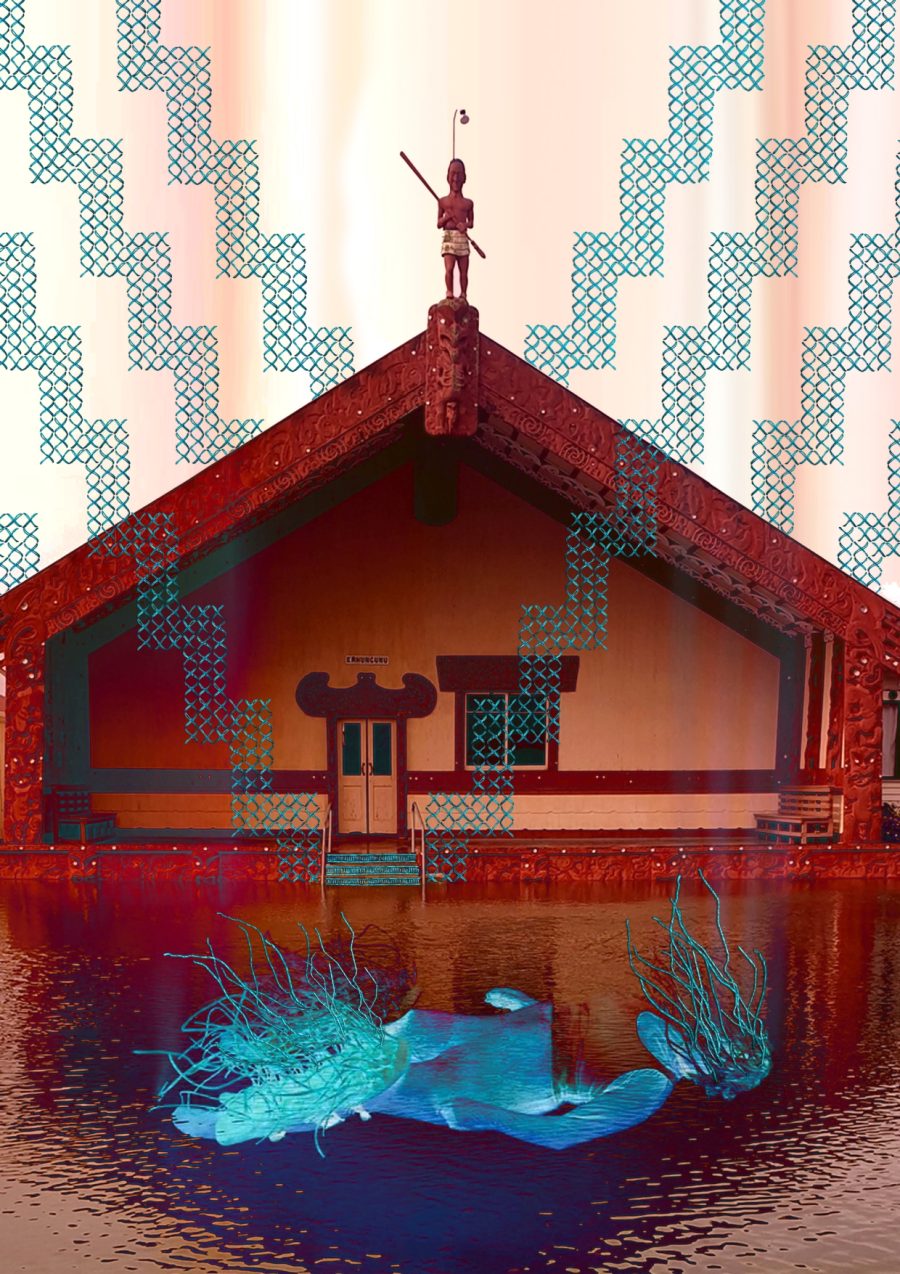
Hine-nui-te-pō | Photo-collage and hand stiched taaniko pattern
Background image: Kahungunu Marae, Nūhaka, Aotearoa during Hurricane Gabrielle 2023, photographer Leo Koziol
Body: Hini wearing art piece by Nhoj Repsog
For my deadname funeral, I chose to burn a child’s white baptism dress as my effigy. I’m not sure if it’s because I’m a Leo or a pyromaniac, but fire does things for me. I weave it into all my ceremonies as ritual.
At a service for a young trans person, we used a fire as a letterbox and ‘posted’ letters to them through the flame. It was such an honour to work with this parent, to honour her child and validate her rage towards systemic failings.
Some of her child’s ashes were scattered around a large aloe vera plant so when she used it to soothe her skin she could reconnect with their memory.
She was amazing and an absolute natural when it came to legacy work.
When I speak of legacy work, I mean the creative navigation of your grief. This can be self-directed or co-created, but often people will look back and see that it came naturally.
It shifts our focus back onto what we can control, i.e. a project or action which offers a soothing hum of activity while we recalibrate into our new reality.
Radical truth-telling is so damn life-affirming and often comes with a good dose of adrenalin.
I’m also a keen community builder, so it took about two seconds of persuasion before I found myself hosting LGBTQ+ death cafes together with a young, queer cohort. We’ve now hosted them for two years.
It’s like a yarning circle for all things related to death and dying. It’s here that I get a sweet, double-hit of dopamine and oxytocin as I take in the tapestry of experience and stories from my peers.
My ears are perked, listening for ways to make the death space more queer-affirming, and I am always encouraging of legacy work around grief.
Recently I led a ceremony for a beautiful woman who, like me, was raised as the daughter of a Christian minister.
After a discussion with her husband, I was encouraged to share this experience in my tribute. I spoke about the added pressure to conform, and the cognitive dissonance, which has a brand all of its own.
Luckily it was well-received; I got nods, sighs and good laughs. Phew. Truth-telling in ceremony must be relevant and well-researched, and you must let go of the outcome – it can be petrifying.
Immediately after the service, her ex-minister father made a beeline for me. Tears streaked his face as he sobbed, “I hope your dad’s as proud of you as I was of my daughter”.
I felt a sense of healing for her, him and myself as we hugged it out.
Truth-telling isn’t always met with an embrace, especially from the conservative, ‘silent generation’. I’ve experienced death stares at queer-affirming services for elder folk, dramatic mid-service exits, and audible groans at the Acknowledgement of Country.
In the grand scheme of things, I can find the humour in these experiences.
There’s a self-governance and independence that exists in the queer experience.
Our queer milestones are unique to us, and I am grateful they have not been commercialised like weddings and baby showers.
We need to address our disenfranchised emotions by celebrating things like ‘coming out’, having your ‘egg cracked’ (if you don’t know what that means, go ask a trans woman), and having a funeral for your deadname. Considering the rates of suicide, specifically for our young trans community, I can’t emphasise the importance of this enough.
Today, I’m grateful for the scars I bear and how they’ve evolved into connection points for the work I do. Your activism doesn’t die when you do; you can ditch the western funeral rule book.
One day, your person will die, if you are lucky enough to be with them at their point of departure from this mortal coil, please honour that miracle of life with your full and undivided presence.
The decisions you make (or don’t make) today about your ending have a far-reaching impact. However you want to be remembered, please, make sure your loved ones know the details.
I hope I never have to meet you and your dead person, but if we do, we can make it magic.
This article first appeared in Archer Magazine #19, the PLEASURE issue.
Hini Hanara is a self-described Death Daddy and funeral ceremony maker. They identify as takatāpui, a Māori term for the LGBTQ+ experience. Under the influence of religion, and subsequent substance abuse, their journey to self-acceptance took the slow but scenic route. Their craving for community has seen them produce and host life-drawing events, queer death cafes and trans Alcohol and Other Drugs (AOD) recovery groups. Hini’s creative career in fashion and costume design continues to inform their work which centres around the body, its autonomy, and now reconstructing rituals around our bodies in death. They find pleasure in truth-telling and decolonising death spaces.


